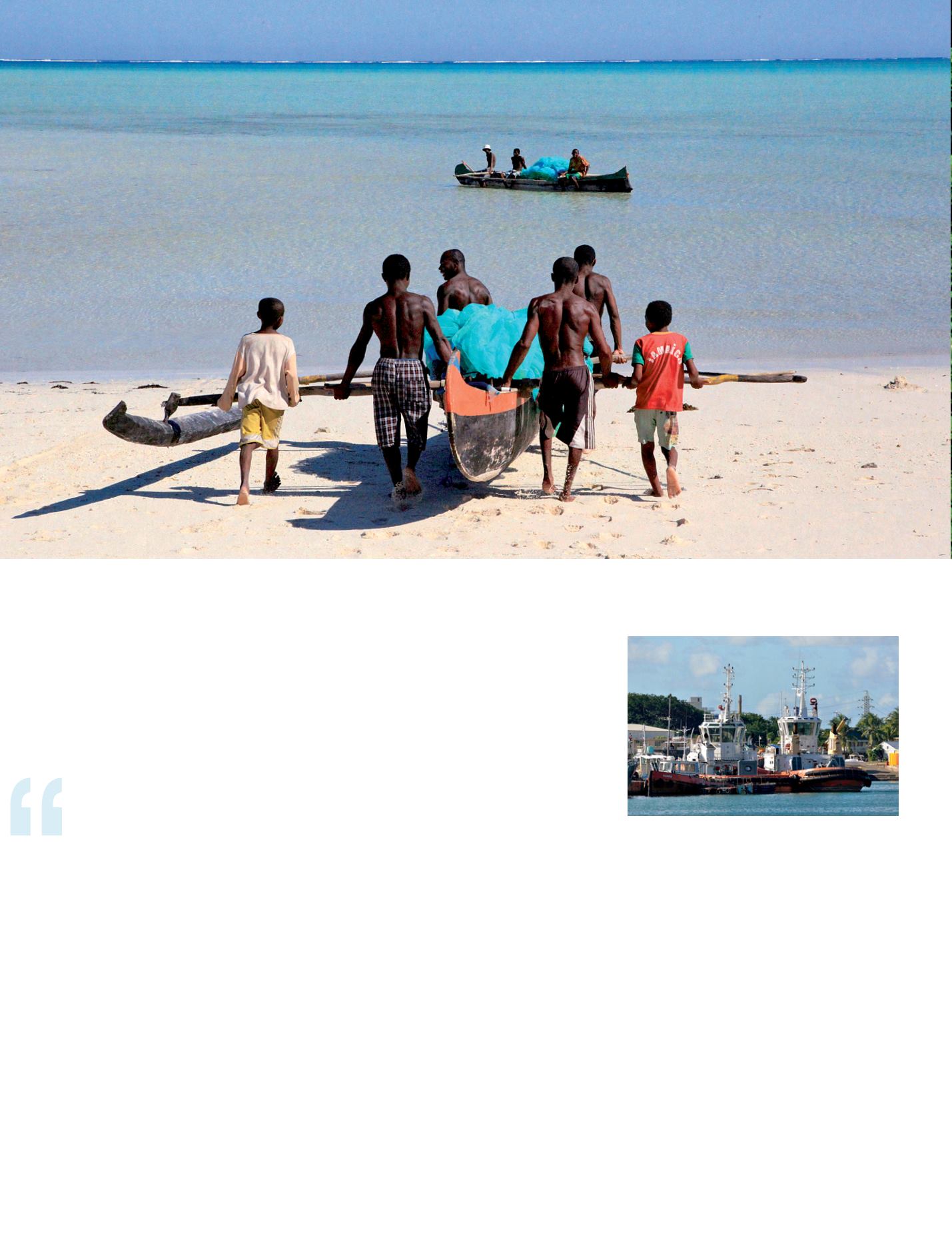
82 - Sustainable Development in Africa & Satellites
Prof. Rolph A. Payet, Minister for
Environment and Energy, Pro-Chancellor,
University of Seychelles, Victoria (Mahe),
Seychelles. Associate Professor
Linnaeus University (Sweden).
Couldyougiveusa fewfactsabout thecoasts
of Africa and the role played by the sea?
A
frica is a massive continent with
very
different
coastlines—on
the Indian Ocean, the Atlantic
Ocean and the Mediterranean. Different
communities living along these coasts
and across Africa have in common a
high dependency on fish as a source
of protein as the protein diet is very
important in Africa. And in many
countries the construction materials
for building houses, medicine and other
kinds of products come from the coastal
environment.
But challenges are very different. Along
the coast of West Africa, they concern
fisheries, the oil industry, as well as
mining industries. Along the East Coast of
Africa, there are also fisheries, a growing
gas industry and soon there might be
an oil industry. Along the South African
Coast, there is more mining but also
fishery industries. In North Africa, there
is a variety of industries ranging from
shipping to fishing and of course tourism,
which plays an important role along the
Mediterranean coast, the Eastern coast
of Africa and Southern Africa.
It is also important on the West coast of
Africa but still developing. Madagascar
is the largest island. Then we have
islands all around Africa, starting from
the North with Socotra, all the way
down to Seychelles, Reunion, Mauritius,
and around the tip of Africa, going up,
we have the islands along the coasts of
Africa, Guinea-Bissau, Sao Tome and
Principe and Cape Verde. And of course
we consider them as entire coastal
zones. In terms of governance, we have
a regional structure. For East Africa, the
Nairobi convention, for the West coast,
the Abidjan convention, and then for
the North coast of Africa we have the
Barcelona convention.
These three conventions cover the
protection and management of the
coastal and marine environment. Now of
course many organisations are involved
in the management of the coast around
Africa. The other initiative is the Large
Marine Ecosystem approach (LME),
which looks not only at the physical but
also the ecosystem, the resources and
the pollution aspects of the management
on the coastal line and the immediate
marine environment.
What part do activities along the coasts
represent in African economy?
Fisheries are very important. You
have the subsistence fisheries, where
fishermen depend on this only source of
income for their living. So problems with
i
An estimated 100 000 traditional fishers live and work in coastal communities in Madagascar. They work at a distance of no more than 10 km from the coast.
They use wooden dugouts called pirogues, powered by oars, and nets. This small-scale fishing supplies 70% of the national fish consumption.
© David Gough/IRIN
Coastal and marine management
i
Port-Louis, Mauritius. Country ranked among those that
emerged from poverty in less than 30 years
©Hansueli Krapf


